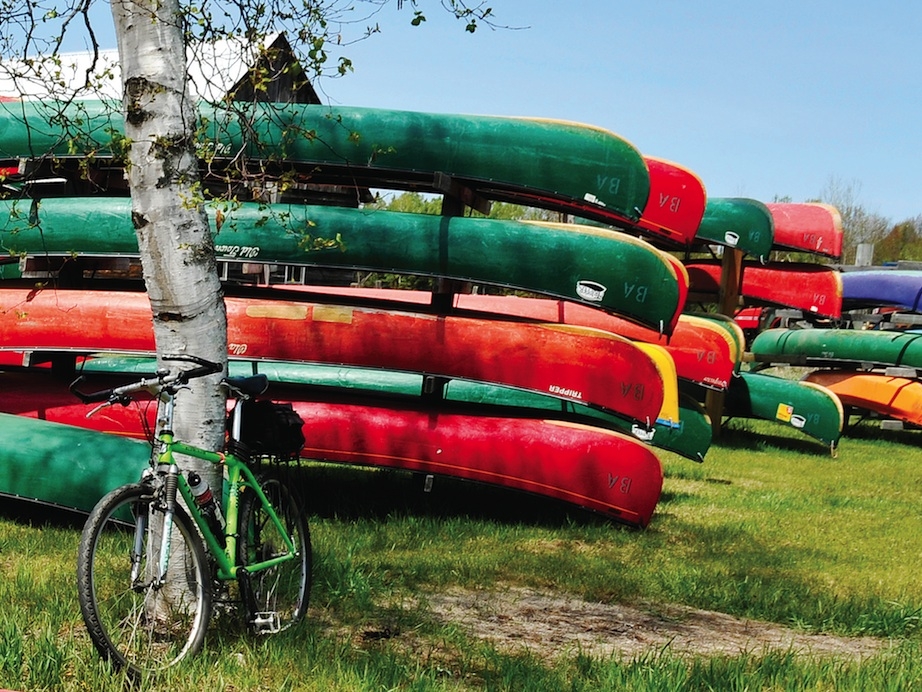This article originally appeared in Canoeroots and Family Camping magazine.
Aluminum was the material of choice for most canoe trippers until the late 1970s when a memorable Old Town Canoe Company advertisement changed the face of canoeing forever.
In 1978, Old Town touted the supreme durability of its 17-foot Tripper canoe by tossing one from the roof of its Maine factory. The canoe escaped unscathed. Since then, Royalex has been the go-to material for Arctic river trippers, summer camps and whitewater boaters alike.
Uniroyal Tire Company chemists designed the vulcanized plastic known as Royalex in the mid-20th century. The material consists of a single inner layer of heat- expandable acrylonitrile butadiene styrene (ABS) foam sandwiched between mid-layers of tough and stiff ABS plastic and exterior surfaces of ultraviolet-resistant vinyl. The material is designed to be heat-molded into complex shapes that withstand impact and retain their original form.
According to Old Town Canoe historian and author Susan Audette, the first canoe constructed of Uniroyal’s patented Royalex material was built by Maine’s Thompson Boat Company in 1964. Old Town became the first to popularize the material when it produced its 16-foot Chipewyan in Oltonar—its proprietary name for the material—in 1972. Vermont’s Mad River Canoe followed quickly with its explorer.
Today, canoe manufacturers order sheets of Royalex with customized thickness pro- files and colors from Indiana-based plastics manufacturer Spartech, who acquired the Royalex formula from Uniroyal in 2000.
The building process involves heating canoe-sized sheets of the material in a “humongous pizza oven” set at about 320 degrees Fahrenheit, explains Roch Prévost, sales manager for Nova Craft Canoe of Lon- don, Ontario. After about 20 minutes in the oven, the material is vacuum formed over a mold in a process that takes a team of builders only 10 minutes. The most time consuming part of building a Royalex canoe is out- fitting it with gunwales and trim. Prévost says Nova Craft can turn out 20 Royalex canoes on a good day and produces about 1,500 per year. Because of its petroleum-based origins, the price of a raw Royalex sheet is dependent on the price of oil—not to mention Spartech’s monopoly on production.
Prévost says the recent spike in oil prices has translated into about a 10 percent in- crease in material cost for manufacturers. These costs will eventually trickle down to consumers. In 1975, for instance, a 17-foot Old Town Penobscot in Oltonar sold for $775; today, the same canoe sells for nearly $1,600.
But due to its near-indestructibility, Prévost maintains that a Royalex canoe will al- ways be a good investment. “It’s something that can be passed down from generation to generation,” he says. “We see 20-year-old Royalex canoes all the time. The trim is broken and worn, but the hulls are fine.” —Conor Mihell
This article appeared in Canoeroots & Family Camping, Late Summer 2011.




